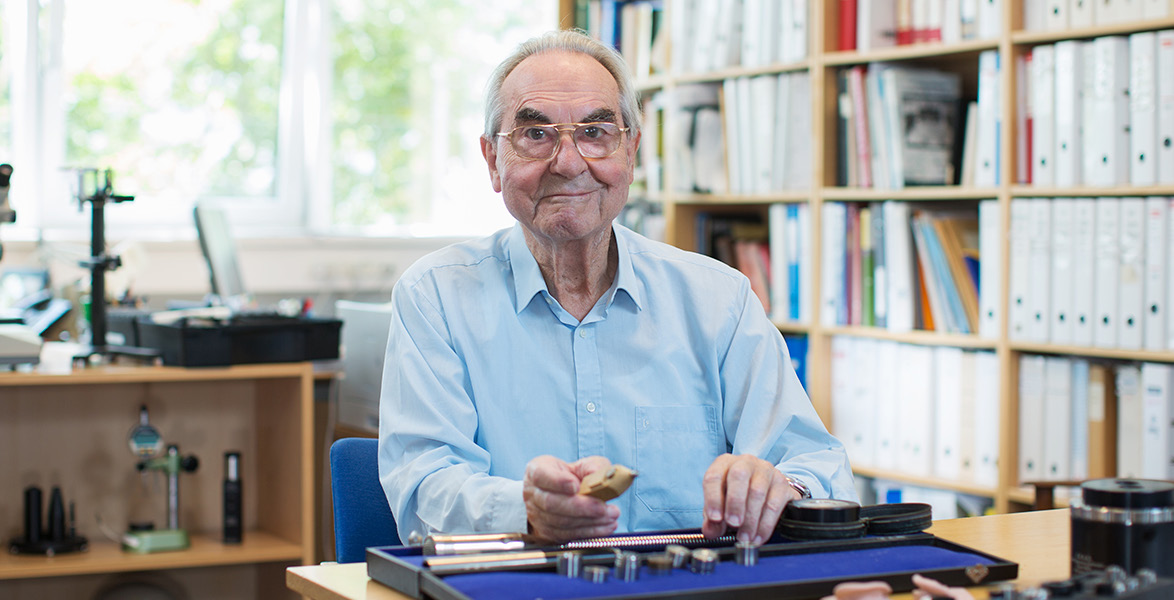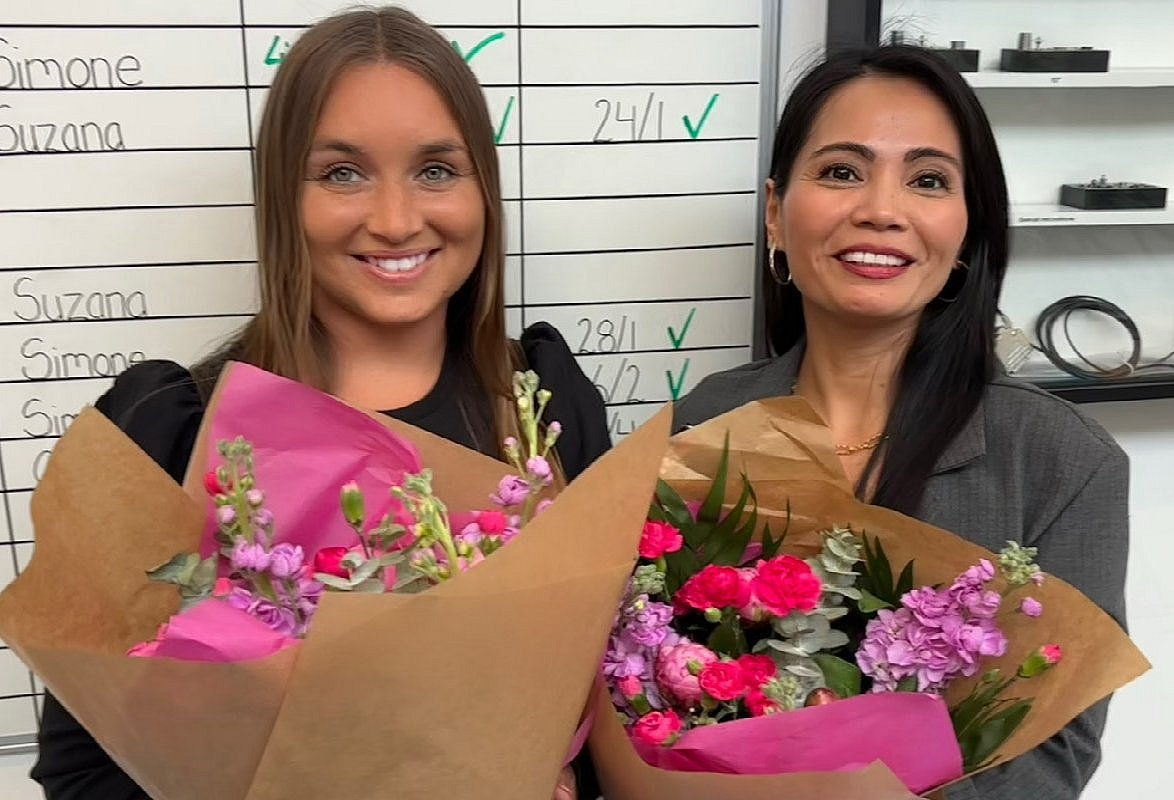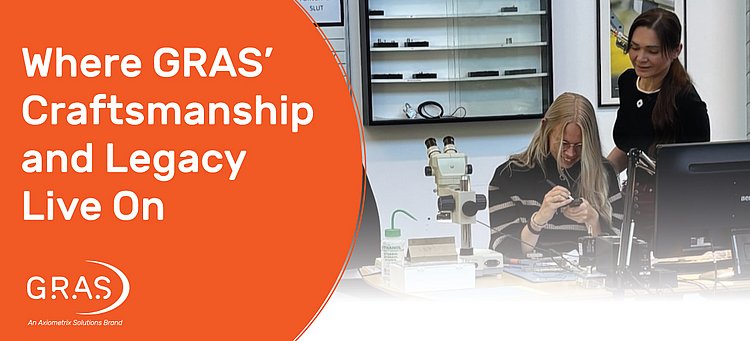The Microphone School at GRAS Sound & Vibration is much more than an introduction program. It is a living narrative of dedication to craftsmanship and technical precision—established by company founder Gunnar Rasmussen and carried forward by generations of passionate employees.
It all began with a desire to showcase pride. Gunnar Rasmussen wasn’t just proud of the precision microphones GRAS produced—he was proud of the employees and their skills. Whenever customers, partners, or guests visited, he loved opening the doors to the production floor to let them experience the complexity behind a microphone. It all started with a diaphragm—and became something much bigger.
The Microphone School – A Tradition in Development
Gunnar’s sons, Per Rasmussen and Peter Wulff Andersen, continued the tradition. But it was Tonny Klokholm who gave the learning process structure and developed the theoretical training that now forms the foundation of the Microphone School. Together with the experienced and patient instructors Simone Rovsing, Suzana Matic, and Gemma Legayada Enne, the school continues to grow each time a new class enters the production facilities.
The school offers two formats:
- A “medium” version lasting about 90 minutes, where participants get to produce a diaphragm and experience some of the key production processes.
- A "large" version over two days, where participants build three pre-polarized microphones from scratch—including fine motor work, microscope tasks, and curve measurements.

GRAS Founder Gunnar Rasmussen
When the Complexity of a Microphone Becomes Clear
What surprises most participants is the sheer complexity. The number of steps in each instruction, and how patience and precision are absolutely critical, as each microphone is truly a piece of craftsmanship. The participants’ reactions speak for themselves. Many walk away with a whole new perspective on GRAS products. New employees gain a deeper understanding of the quality and DNA that runs through the company. Customers leave with newfound respect for the effort it takes to produce such high-precision equipment. And internal relationships are strengthened as colleagues gain insight into each other’s work across departments.
The Microphone School – A Cultural Catalyst
One of the most valuable effects of the Microphone School is the deeper understanding it brings of what GRAS means by uncompromising quality. When both employees and customers get hands-on with microphone production—from handling micronthin diaphragms to microscope-level adjustments—it becomes crystal clear: GRAS never compromises.

Simone Rovsing on the left and Gemma Legayda Enne on the right.
Participants experience firsthand the level of precision and patience required to ensure stable and reproducible performance in every single microphone. This not only builds respect for the craftsmanship but also creates a clear understanding of why GRAS sets the highest bar in the market—and why GRAS and HBK are benchmarks for the entire industry. GRAS also actively contributes to the development of international and official acoustic measurement standards through close collaboration with standardization bodies, leading research
institutions, and industrial partners worldwide.
After completing the Microphone School, one thing is clear: market leadership is not only about technology. It is about people, details, and a dedication to quality in every step.
Now a Firmly Embedded Part of GRAS’ Quality Culture
The Microphone School is now such an integral part of GRAS’ culture and daily operations that it has been formalized within the company’s quality system. Its structure, learning objectives, and practical exercises are now a standard part of onboarding and competency development. This means the school is no longer an “extra effort”—it is a recognized and systematized way for GRAS to ensure quality, knowledge, and shared understanding across the organization.
Looking ahead, the team will continue to develop the school’s role as a knowledge hub and cultural ambassador, enabling even more people—internally and externally—to experience, understand, and appreciate the precision craftsmanship that makes GRAS unique. With respect for its history and eyes on the future, the Microphone School stays true to Gunnar
Rasmussen’s vision:









